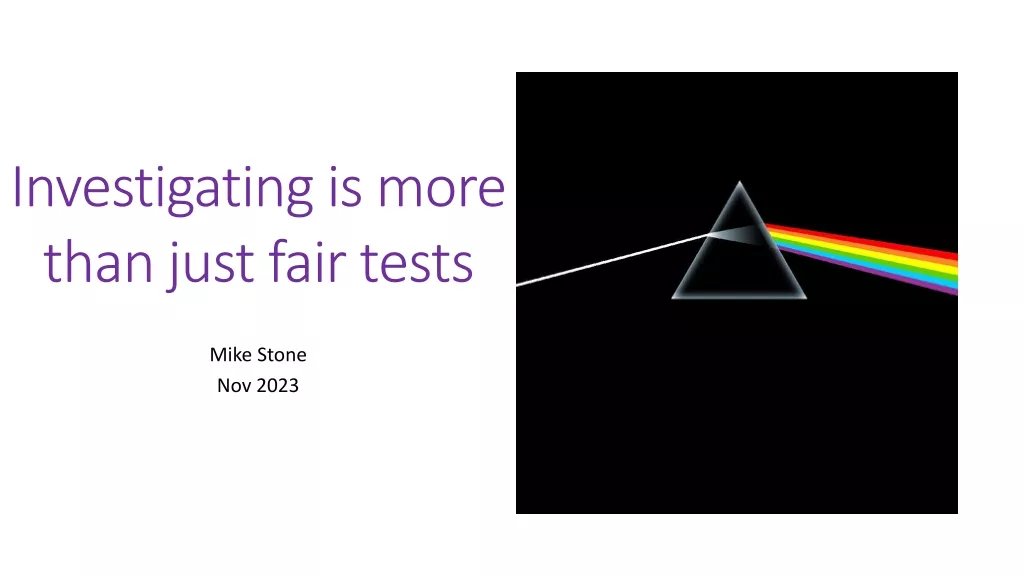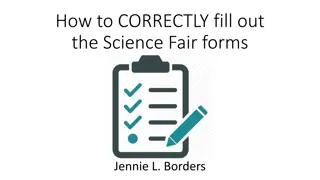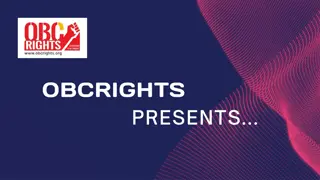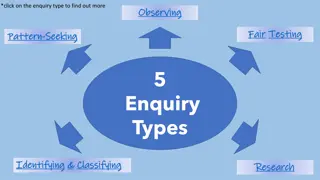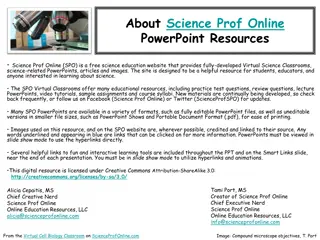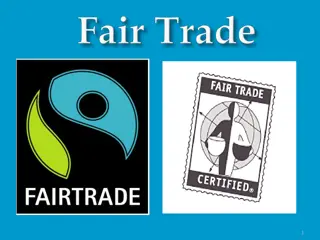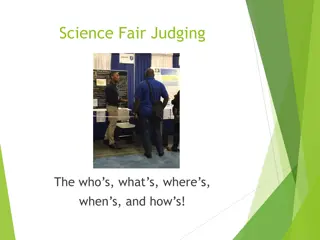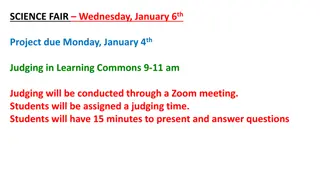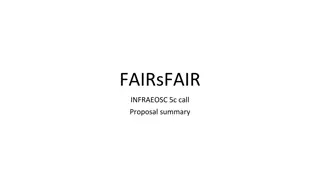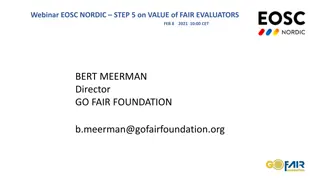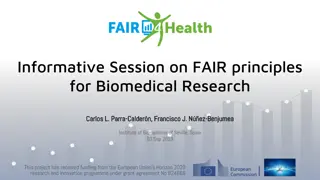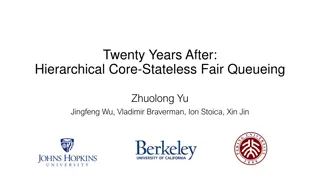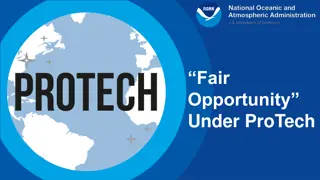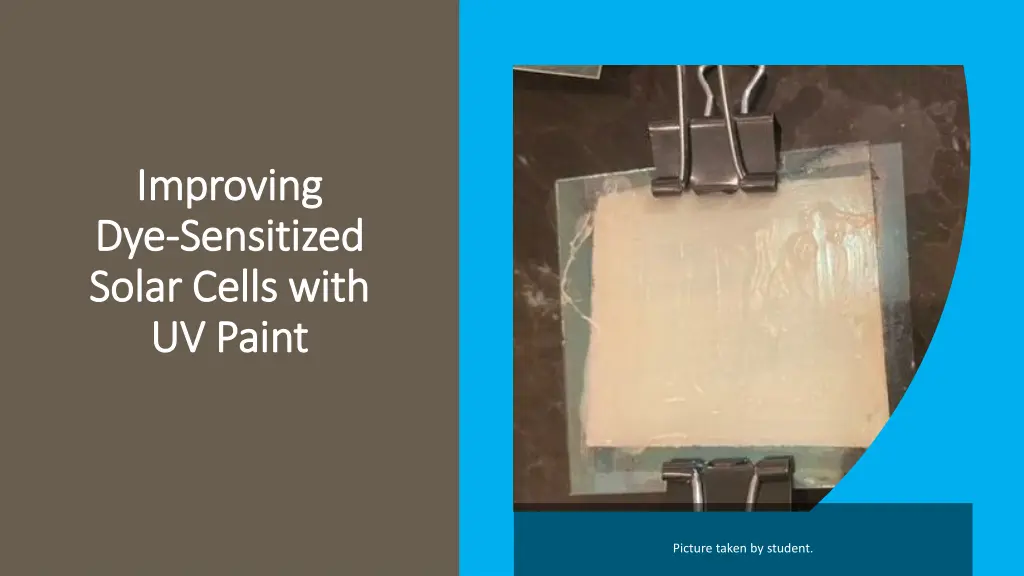
Efficient Improvement of Dye-Sensitized Solar Cells
Enhance the efficiency of dye-sensitized solar cells by utilizing UV paint to convert ultraviolet light into visible light. Explore the impact of different fruit dyes on solar panel efficiency. An eco-friendly approach to combat climate change and reduce reliance on fossil fuels.
Download Presentation

Please find below an Image/Link to download the presentation.
The content on the website is provided AS IS for your information and personal use only. It may not be sold, licensed, or shared on other websites without obtaining consent from the author. If you encounter any issues during the download, it is possible that the publisher has removed the file from their server.
You are allowed to download the files provided on this website for personal or commercial use, subject to the condition that they are used lawfully. All files are the property of their respective owners.
The content on the website is provided AS IS for your information and personal use only. It may not be sold, licensed, or shared on other websites without obtaining consent from the author.
E N D
Presentation Transcript
Improving Improving Dye Dye- -Sensitized Sensitized Solar Cells with Solar Cells with UV Paint UV Paint Picture taken by student.
Background Imagine a world where we don t need to rely on the fossil fuels that pollute the air. As of right now where we don t need to live with the shrinking Poles and global warming? Imagine a world if we need to have a mask every day when you go to school; we already know how bad it has been over months and how draining it is. These masks would be the masks they use in China due to pollution; they aren t the soft kind we use in this pandemic. Which world would you want to live in? Many solutions have been proposed to solve this problem: Hydropower (for example) is very useful but has its problems. Not everywhere has access to the water amounts needed. In Ethiopia, they are building a dam. If built large enough, it could power all of the country's electricity, but it would have disastrous effects on other nations such as Egypt. One of the other solutions is solar power. Solar power has its own problems: the first of them being its effectiveness. If the solar cell can become an efficient method, it can be an important effective non fossil fuel source without the dangers of other non-fossil fuels such as nuclear power. If we cannot solve a solution to global warming great disasters will happen to water supply the ecosystem and will cause flooding in large coastal cities. One of the reasons that these solar cells are inefficient is that they only work with visible light which is less than half the light on Earth and isn't the strongest type of light either. The purpose of this project is to increase the efficiency of a dye sensitized solar cell; therefore, making it a more effective eco-friendly option to stop climate change. I will attempt to do this by adding a type of paint that turns ultra-violet light into visible light to see if it increases the productivity. I will also do this by analyzing which fruit will do the best: to analyze if we should specialize in a specific fruit.
Purpose The purpose of this project is to increase the efficiency of a dye-sensitized solar cell. To use a paint that turns ultraviolet light into visible light. To analyze which types of fruit dyes increase the efficiency of the solar panel.
Essential Terms Essential Terms Dye-sensitized solar cells (DSSC). The dyes can produce electricity. Once sensitized by light, the dye catches the photons from the light, and it causes the electrons to behave like chlorophyl in photosynthesis. The dye sends the electrons to the titanium dioxide; the titanium dioxide conducts it away. A chemical electrolyte in the cell then closes the circuit so that the electrons are returned to the dye. In movement, these electrons create electricity which can be harvested into a battery. (Note 3 I- oxidize into I_3 2e. The picture to the left show the light coming and exciting the dye. The excited dye injects am electron and goes into the titanium dioxide. The electron then flows around the circuit and then into the Iodine solution. The Iodine transports the electron back to the dye creating energy. In the DSSC, the dye losses and electron and is oxidized. The Oxidized dye receives an electron from the iodine ion, which restores the dye to its original state allow the process to repeat itself. The paint we used is on the glass, so any UV light would turn into visible light adding to the output of the cell. Titanium dioxide is a naturally occurring ionic compound. The chemical formulas Ti02. Generally, it is sourced form ilmenite, rutile, and anatase. It is often used in sunscreen because it scatters visible light and absorbs UV light. Ultraviolet light is a type of light between visible and Xray on the light spectrum. It makes up about 3% of light on Earth. Uv light is between 3-30 electron volts in energy. Compared to visible light which has 1.5 to 3 electron volts. Which means it is significantly more powerful. Uv light can be dangerous and can cause severe burns on the skin which may be felt for several hours. This shows how much more powerful they are in comparison to visible light.
Electrons in Excited State This is an example of electrons in an excited state. When electrons are in an excited state, they produce more energy but are unstable. This causes them to go to them to go into their low energy form called ground state; and the extra energy becomes light. Electrons go into an excited state when they receive extra energy such as light or heat. The more energy the more light produced.
Hypothesis It is hypothesized that the paint will increase the efficiency of the cell because it will turn the UV light and make more visible light for the solar cell to absorb and create energy. It is hypothesized that blackberries will do the best since they do better in low light levels so they might be more efficient.
Rutile titanium dioxide Fluoride-doped tin dioxide conductive glass Blackberries, raspberries Candles Glomania neon UV paint (green) Iodine solution Cleaning materials: Acetone, deionized water, Alcohol, Cotton pads, Q-tips Voltmeter Binder Clips Plates, bowls, or shallow dish Materials
1. Put acetone on the cotton pads and clean the plates. 2. Test the fluoride-doped tin dioxide conductive glass plate for conductivity; place the conductive side up. 3. Take a shallow dish add a teaspoon of titanium dioxide add water and stir until lumps are removed . 4. Tape three sides of the glass. Spoon a thin layer of titanium dioxide on the glass. 5. Spread the titanium dioxide with a straight edge, using the tape as a spacer, to create a very thin layer. 6. Bake the plate on the cooktop for about one hour and fifteen minutes at 500 degrees Fahrenheit. 7. Use a juicer to extract the berry juice. Strain any large particles with cheese cloth. Methods 8. Place the plate in a shallow dish. 9. Pour the juice over the plate, covering it completely. Let it sit for 10-15 minutes, so it can soak in. 10. Rinse the plate carefully with demineralized water. 11. Carbonize the conductive side of the plate with a candle by passing through the flame until black. 12. Place several drops of iodine solution on the baked titanium dioxide plate. 13. Place the carbonize plate on top of the titanium dioxide plates. Use 2 binder clips to hold them together. 14. Place in light and measure; record data. 15. Paint the top side of the solar cell with UV paint . 16. Place in light and measure; record data.
Quad Chart The purpose of this project is to increase the efficiency of a dye-sensitized solar cell. To use a paint that turns ultravioletlight into visible light. To see which types of fruits increase the efficiency the most. 1. Put acetone on the cotton pads and clean the glass plates. The paint seemed to have the best result on raspberries 14-9 % increase compared to everything else being 2-6 % 2. Test the plate for conductivity; place the conductive side is up. 3. Use a dish, add a teaspoon of titanium dioxide. Add water and stir until smooth. The hypothesis that the paint increase is accepted because it did increase all of the solar cells 4. Tape three sides of the glass. Spoon a thin layer of titanium dioxide on the glass. 5. Spread the titanium dioxide with a straight edge, using the tape as a spacer, to create a very thin layer. The hypothesis that raspberries will do the best is accepted because it did better than the other fruits. 6. Bake the plate on the cooktop at 500 degrees Fahrenheit for 1 hour. Discussion 7. Use a juicer to extract the berry juice. Strain any large particles. I believe that since the UV light already was turned into visible light it would increase the amount. 8. Place the plate in a shallow dish. 9. Pour the juice over the plate, covering it completely. Let it sit for 10-15 minutes, so it can soak in. I believe blackberries did the best since they do better in low light levels so they might be more efficient with light. 10. Rinse the plate carefully with demineralized water. 11. Carbonize the conductive side of the plate with a candle by passing through the flame until black. 12. Place several drops of iodine solution on the baked titanium dioxide plate. 13. Place the carbonized plate on top of the titanium dioxide plates. Use 2 binder clips to hold them together, 14. Place in light and measure; record data. 15. Paint the top side of the solar cell with UV paint . 16. Place in light and measure; record data.
Graphs Charts Graphs Charts milivolt milivolt with UV paint percent increase Blackberry 170 178 4.705882353 Rassberry 4 96 100.2 4.375 Raspberry 3 87.9 93 5.802047782 Beet and Raspberry 31.6 31.8 0.632911392 Raspberry 2 10.5 11.5 9.523809524 Raspberry 1 4.2 4.8 14.28571429
Conclusion/Discussion CONCLUSION The hypothesis is confirmed that the paint will increase efficiency. In all cases the UV paint increased the output of the solar cell. The hypothesis that blackberries will do the best is accepted because it did better than the other fruits. DISCUSSION The paint increased the efficiency of the cell because it turned the UV light and make more visible light for the solar cell to absorb and create more excited electrons which created more energy. I believe Blackberries did the best since they do better in low light levels were able to make more power from the electrons than the raspberries. Picture taken by student
Real world connections/Next steps We are at an energy crisis where we need to make non fossil fuel energy and have the efficiency to justify it. We need to prepare for the future because of the effects of global warming. I would like to see how infrared paint would help. I would like to see if different types of titanium dioxide would help.
References Greg Smestad (2009) Titanium Dioxide Raspberry Solar Cell https://education.mrsec.wisc.edu/titanium-dioxide-raspberry-solar-cell/ Yu, Hua, Zhang, Shanqing, Zhao, Huijun, Will, Geoffrey, Liu, Porun (2009) An efficient and low-cost TiO2 compact layer for performance improvement of dye-sensitized solar cells https://research-repository.griffith.edu.au/bitstream/handle/10072/30296/60805_1.pdf?sequence=1 Sudjito Soeparman,Denny Widhiyanuriyawan,Lilis Yuliati (2019 June 9) Performance Improvement of Dye-Sensitized Solar Cell- (DSSC-) Based Natural Dyes by Clathrin Protein https://www.hindawi.com/journals/ijp/2019/4384728/ Khushboo Sharma, Vinay Sharma & S. S. Sharma (2018, November 28) Dye-Sensitized Solar Cells: Fundamentals and Current Status https://nanoscalereslett.springeropen.com/articles/10.1186/s11671-018-2760-6 Abdel khalk, Aboulouarda, Burak Gultekinb, Mustafa Canc, Mustafa Erold, Ahmed Jouaitia, Benachir Elhadadia, Ceylan Zaferb, Serafettin Demice (2020, March-April) A comparative study on photovoltaic performances. https://www.sciencedirect.com/science/article/pii/S2238785419304119 Deyang Li, Guanying Chen (2019) Upconversion-Enhanced Dye-Sensitized Solar Cells https://www.sciencedirect.com/topics/engineering/dye-sensitized-solar-cell dkeith95 (2016) How to Build & Use a Dye-Sensitized Solar Cell (DSSC) + a Discussion on Energy & Efficiency https://www.instructables.com/How-to-Build-Use-A-Dye-Sensitized-Solar-Cell-DS/ Bill Soutter (2013, jan 28) What is a Dye-Sensitized Solar Cell? https://www.azonano.com/article.aspx?ArticleID=3175 John(2019, September 30) DYE-SENSITIZED SOLAR PANEL https://solarenergyforus.com/dye-sensitized-solar-panel/3karKvXV4X5a2-JikbeF6BLyr4E7SCL4EDl8A0XwJmqwcWjtELrx1nfC9JKN7TfC_PWxjrc-6EWgiz4S8hWlmMh-qbQ7nKxVskZXFL2AMEQ9HbzzL98RvodEQ The Bohr Model of the Atom http://www.ece.utep.edu/courses/ee3329/ee3329/Studyguide/ToC/Fundamentals/Bohr/description.html#:~:text=These%20levels%20are%20called%20energy%20states.&text=When%20an%20electron%20in%20an,excess%20energy%20by%20emitting%20light.

